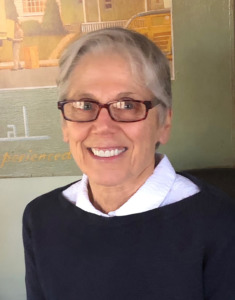This website uses cookies so that we can provide you with the best user experience possible. Cookie information is stored in your browser and performs functions such as recognising you when you return to our website and helping our team to understand which sections of the website you find most interesting and useful.
Interview with Nancy Ohanian, who is an editorial cartoonist and illustrator. Since 1974, she has exclusively drawn for The New York Times, The Los Angeles Times, The Wall Street Journal, The Financial Times, Downwithtyranny.com, and other print and online news media.
What do you feel makes your work stand out, that drew the judges’ attention to it?
I can’t really understand exactly why the work stood out this time. I wonder if perhaps timing may have played a role. And the idea is relevant for today; that may have been part of its strength.
How did the idea behind your winning project come about?
I have fun playing with different political characters that are particularly disingenuous and outrageous in their views. When I heard some of Marjorie Taylor Greene’s comments about Donald Trump, I couldn’t resist representing the implications.
Tell us a bit about your creative process. Where do you find your inspiration?
I find inspiration in almost anything – when I wake up in the morning, working out, having a conversation with a friend, reading the news, hearing a single word – any instance may bring a visual image to my mind. I love to see where it can be taken when placed in a new context. I do pencil sketches before constructing the image on the computer.
What impact does your background have on your work?
My background as a pen and ink editorial illustrator laid the foundation for the work I do today. I learned how to think symbolically. Later I added the satire.
Who or what are your biggest artistic influences?
I love the work of Ralph Steadman, especially his freedom of expression.
How has your own style evolved over time?
My original editorial illustrations were very detailed black and white, pen and ink drawings. The work evolved into a freer style. Later, Adobe Illustrator offered new possibilities using color and different types of imagery. Although I now use the computer instead of the pen, my sense of space and symbolic thinking is a thread that continues to run through my work.
What are your long-term professional objectives?
Most of all, I want to continue having fun with the work I produce.
What significance does your art represent for you personally, and for your audience?
My work is significant because I love creating it. I’m not sure what it represents to anyone else beside my students at Rowan University. They learn by example, from our conversations about ideas, space, symbolism, etc. I hope they are inspired and curious about where their own work can take them.
View the winning project of Nancy Ohanian here.
© 2024 London International Creative Competition





Recent Comments